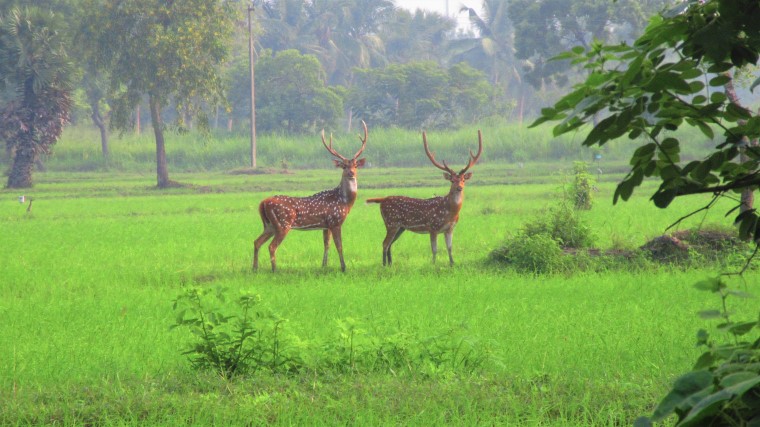Annapurna’s wildlife



30 years ago the Annapurna area of 135 acres was more or less a barren land. There was little shelter and food for wild life. With the farm developing and vegetation evolving, gradually wildlife increased and nowadays the farm is a sanctuary for wild animals. Organic agriculture is also about providing space for animals. That was and is one of Annapurna’s visions and the success of this approach is now visible in the farm.
Definitely this is good news for the environmentalist, but for the farmer it is a big challenge. It is wonderful to host nature, but for the animals the fields, crops and seeds are their food. To find harmony between these aspects is a major task.
Annapurna’s wildlife comes in many kinds. There is a wide variety of birds, parakeets, peacocks, deer, wild pigs, mongoose, civet cats, squirrels and porcupines. There are monitor lizards, cobras and vipers and many other kind of snakes. The bigger animals hide during the day in the forests and green fences that the stewards planted in the outer areas of the farm in the early days. These forests and fences function as green buffers and they have meanwhile become impenetrable thickets and excellent hiding places for the animals. In a rich farm environment animals propagate much faster then in their wild habitat. All of them have their favorite dish. Green parakeets are very much after sorghum, sesame, grams and indigenous cereal and growing sorghum had to be abandoned because legions of parakeets came from far away and finished the sorghum fields. The porcupines go in particular for young papaya trees, while the peacocks are in special favour of the millets, paddy and guavas. The civet cats like guavas and papayas as well. The deer go for the bark of the young trees and graze the millet, paddy and fodder fields, wild pigs destroy the dikes in the rice fields and like to wallow in the standing rice crop, they dig up large tracts of land to find roots and worms, and even the cute mongoose want their share and enjoy young chickens and eggs.
Eradicating wildlife is not amongst Auroville’s and Annapurna’s principles. But how to curb nature’s advance? Before the stewards can initiate countermeasures, the habits of the wild animals have to be observed. With understanding their life cycles, fears and weaknesses the farmer may be able to out-smart some of them. Most animals are very shy and will not show themselves easily. They mostly come out in the shelter of the dark night.
Besides studying the wild life habits, one thing that will surely help is a good fence around the farm. This will curb the bigger animals like deer and pigs which are a major damaging factor.
Annapurna’s land is cut into three sections which have all together approximately 7000 metre of a green periphery fence. It will be a major task and expense to replace it by a proper wildlife proof fence.
